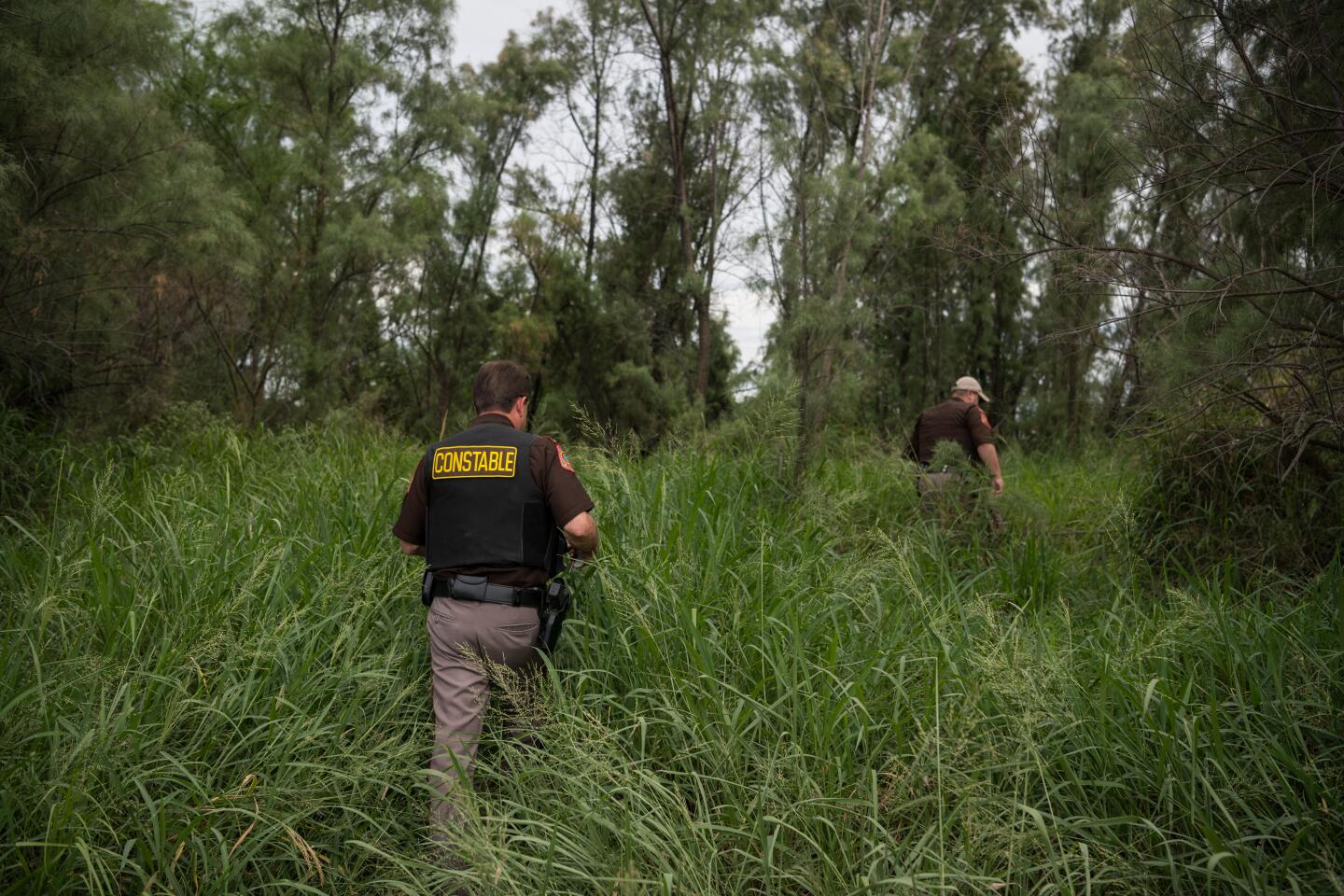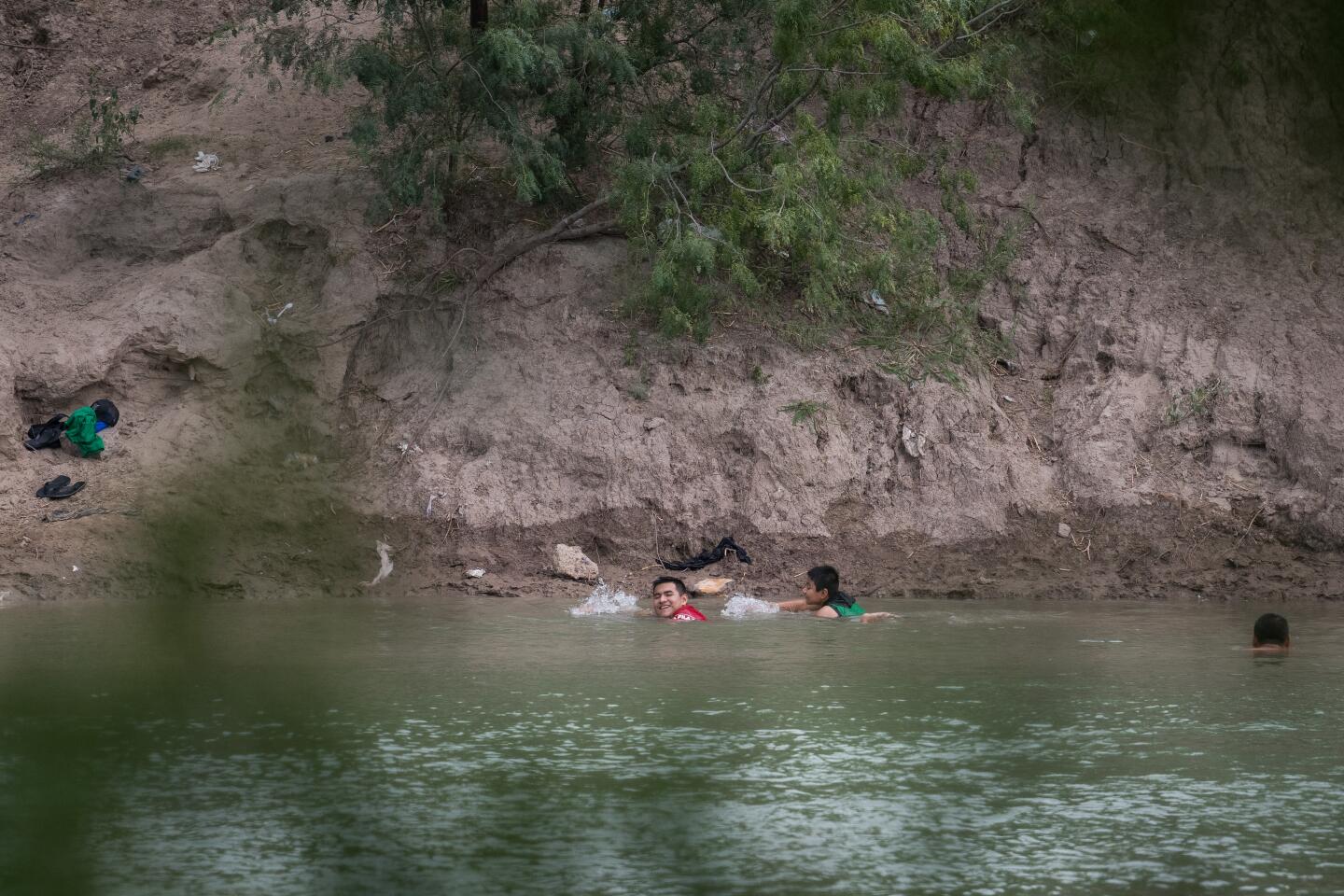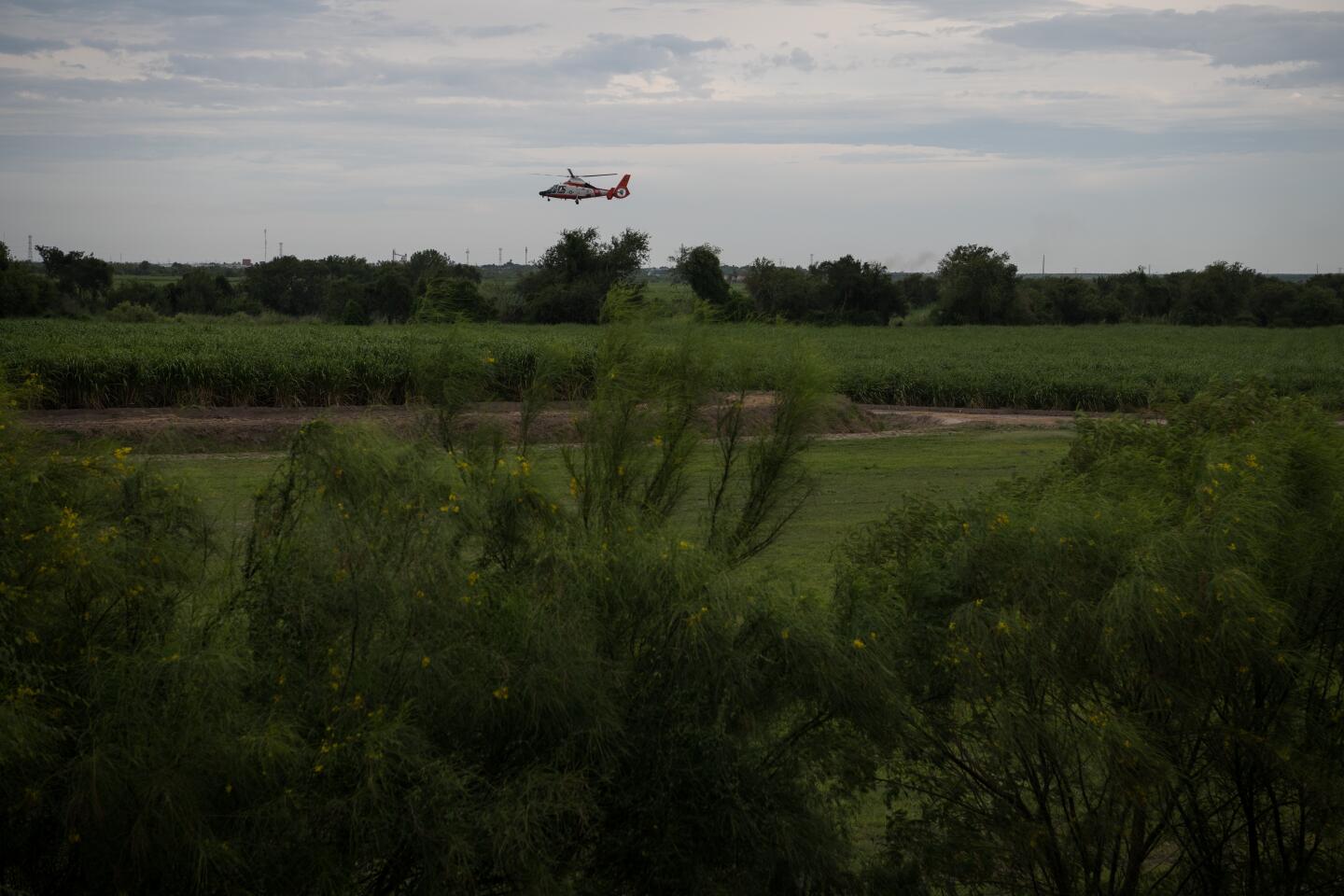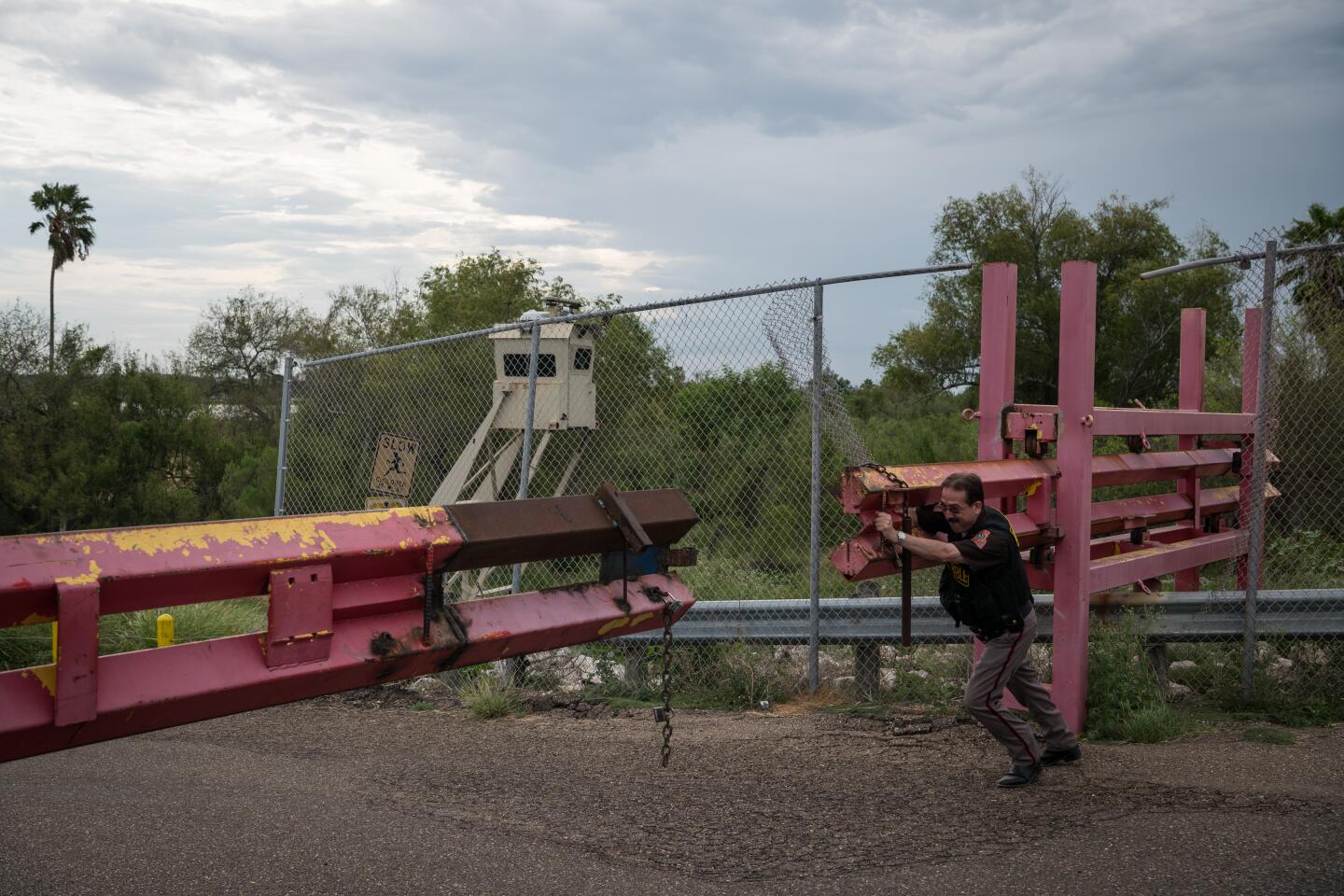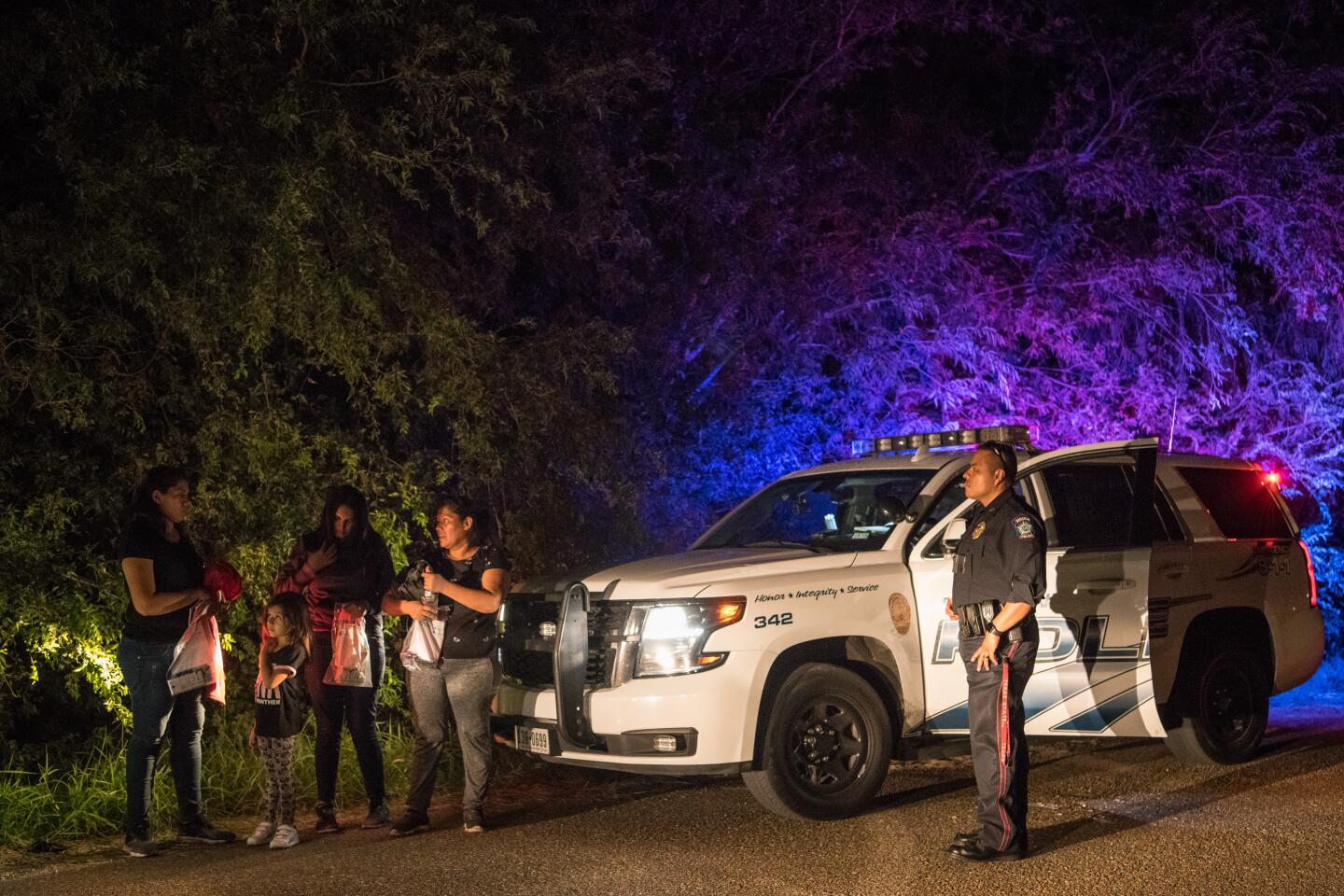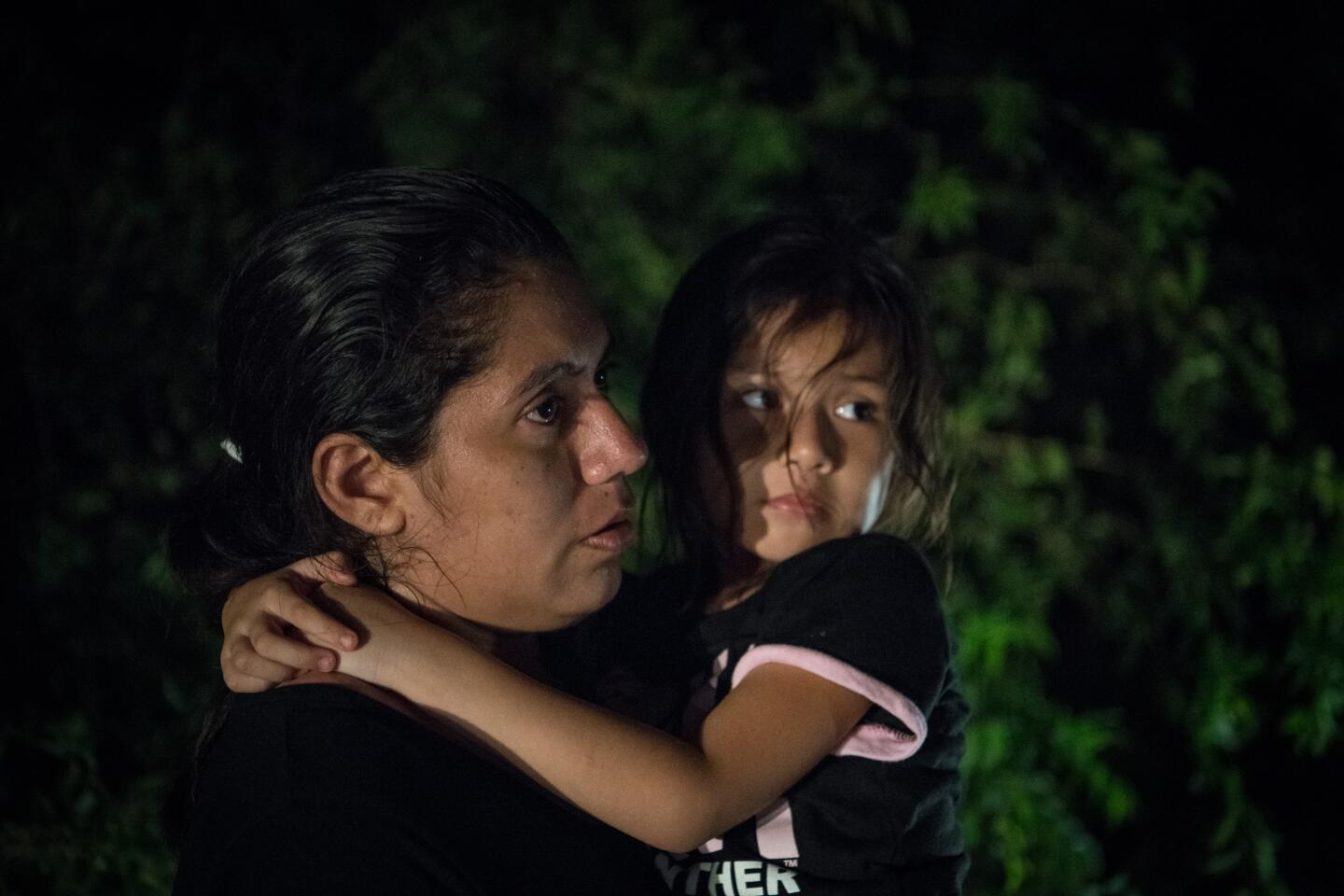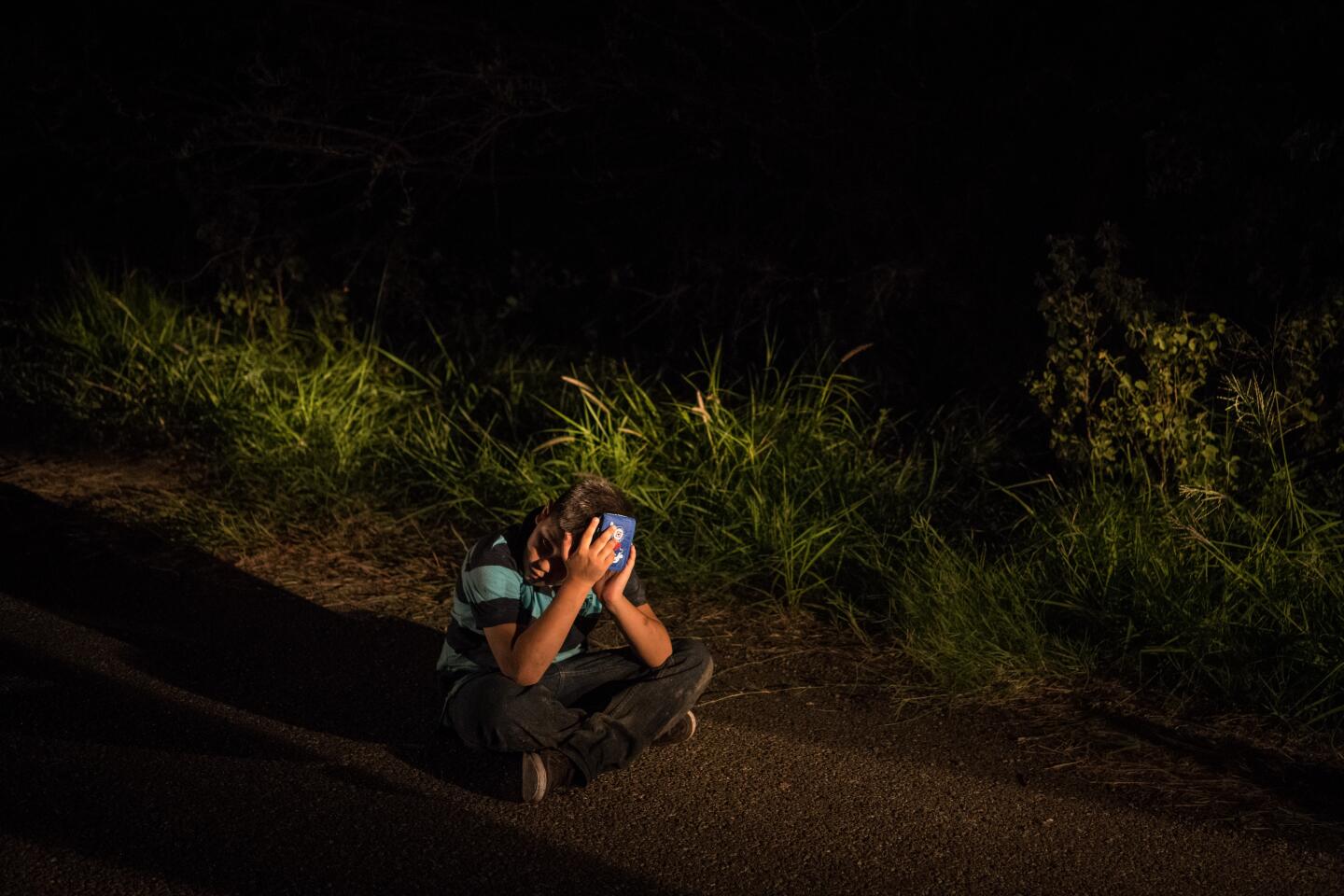Migrant traffic on the busiest stretch of border has decreased, but is the shift significant?
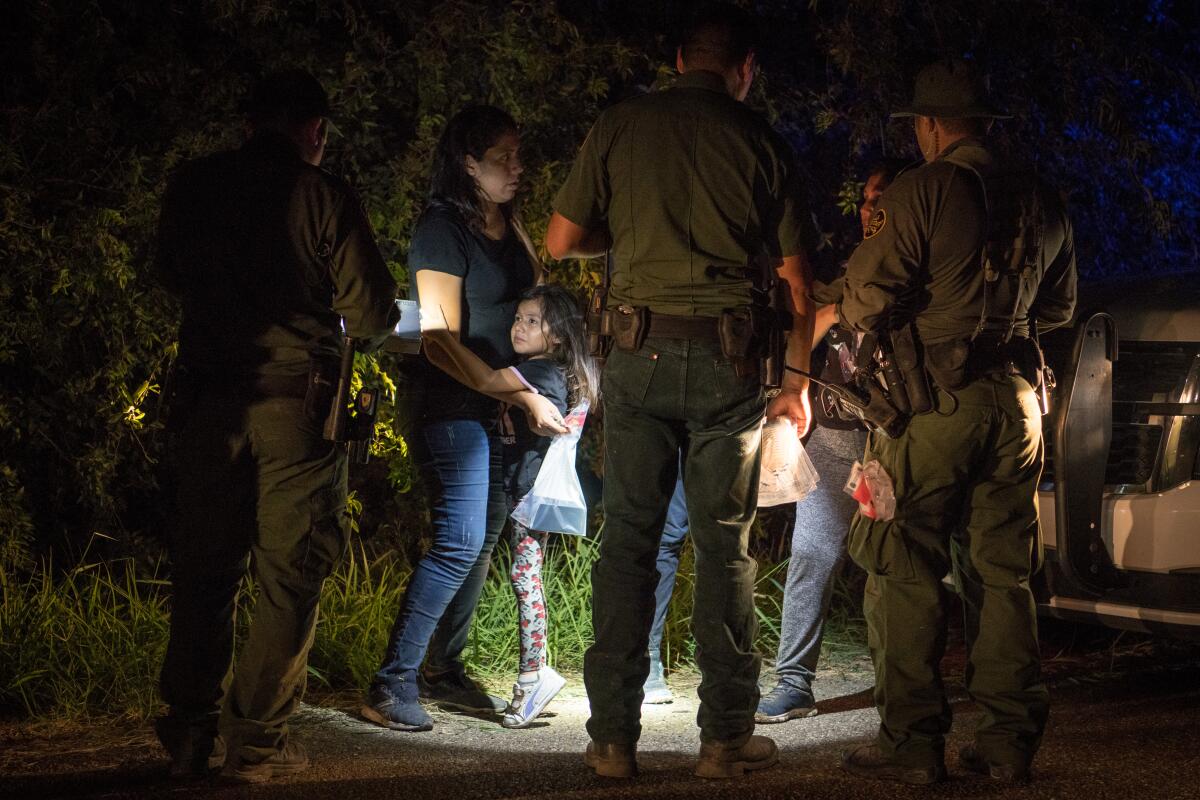
- Share via
MISSION, Texas — Tents set up by Border Patrol agents to process hundreds of asylum seekers on dirt roads just north of the Rio Grande last month have sat empty this week, as smaller groups of migrants crossed this area of the U.S.-Mexico border.
Hidalgo County Chief Deputy Constable Rene Gonzalez cruised south past the barren tents toward the riverbank, searching for migrants. Gonzalez said Mexican national guard troops recently increased their presence along the river, helping reduce the number of migrants crossing illegally this month. Mexico has deployed 15,000 troops to its border with the U.S.
“It’s been a huge dip,” Gonzalez said on a night this week when only a handful of migrants were caught. “But I don’t know if it’s sustainable.”
Migrant apprehensions were way down in Mission from a night two weeks earlier when 250 people were caught crossing the border illegally. But across the Rio Grande Valley, the slowdown was uneven: On the same night in another area just 35 miles to the west in Rio Grande City, the Border Patrol caught more than 1,000 migrants in 24 hours.
Border Patrol officials and migration experts say any slowdown is at least in part attributable to migrants and smugglers lying low in northern Mexico until the crackdown by agents on both sides of the border eases.
“How many of these immigrants are in Mexico just waiting to cross? Maybe it’s just temporary,” said Gonzalez’s boss, Constable Lazaro “Larry” Gallardo.
Texas’ Rio Grande Valley has been the busiest stretch of border for illicit crossings for the last six years, making it a good barometer for the impact of President Trump’s immigration policies.
In June, the number of migrants the Border Patrol caught attempting to cross the border illegally dropped about 29% from May, compared with a 15% decrease during the same months in 2018. Last month’s decrease occurred after Trump threatened to impose tariffs on Mexico unless officials cracked down on illegal immigrants heading north to the U.S. border.
The Trump administration has since expanded restrictions on asylum seekers including a “safe third country” agreement with Guatemala announced Friday and the “Remain in Mexico” program, which forces those with asylum cases in U.S. courts to await the outcomes in Mexico.
Even fewer migrants have been caught attempting to cross the southern U.S. border illegally so far this month, Border Patrol officials said, temporarily easing overcrowding at some of the agency’s detention centers, although officials said it was not clear how much of that was because of Trump’s new policies.
As of this week, the Border Patrol had caught 63,143 migrants in July, on pace to reach from 76,000 to 79,000 by the end of the month, according to Brandon Judd, president of the union that represents agents, the National Border Patrol Council. That’s at least a 17% decrease from June, more than twice the percentage decrease from June to July of last year of about 8%, according to Border Patrol figures. In 2017 and 2016, the number of migrant apprehensions increased from June to July, and in 2015 they remained roughly the same from month to month.
“Some will argue that the summer months is the cause for drops, but these drops by percentage are much greater than the normal summer ebbs and flows,” Judd said, crediting the Remain in Mexico program with deterring would-be migrants and “ramped up enforcement by the Mexican government.”
This week, Mexico’s foreign affairs secretary claimed the number of migrants crossing into the U.S. from Mexico had decreased 36% since officials reached an agreement to avoid tariffs June 7.
Ken Cuccinelli, acting director of U.S. Citizenship and Immigration Services, told the Washington Examiner that the total migrants who arrived at the U.S. border nationwide — both those caught crossing illegally and asylum seekers presenting themselves legally at ports of entry — will likely drop below 80,000 in July, a 25% decrease from June.
Cuccinelli said that the number of migrants arriving at the Mexican border usually drops far less from June to July, about 6%, and credited Mexican officials with increased enforcement near high-traffic areas of south Texas, especially the Rio Grande Valley, which he called “the No. 1 corridor” for illegal immigration.
“The fact that there’s a crackdown no doubt has lead Mexican smugglers to put a lot of their activity on hold,” said Adam Isacson, a senior researcher at WOLA, a Washington-based policy think tank specializing in the Americas.
Isacson noted that a similar decrease in apprehensions occurred after Trump was elected and after Mexican officials announced a border crackdown in 2014, but then the number of illegal crossings slowly increased again, which he said still might happen this fall if smugglers shift to new routes as temperatures cool.
The Border Patrol won’t release July migrant apprehensions until August and officials were not ready this week to say that lower apprehension rates amounted to more than a temporary blip.
“It’s been sporadic. It hasn’t been enough for us to say if there’s a significant drop-off” because of policy changes, said a Border Patrol official who was allowed to speak on condition he was not named.
The official, however, praised the Mexican military’s increased border enforcement activities, including coordinated or “mirrored” anti-smuggling operations along the Rio Grande with the Border Patrol.
“We have seen an increase in Mexican officials on their side of the river. The response, the communications, has improved,” the Border Patrol official said, adding, “It’s still too early to say if it’s making a difference.”
Smugglers in Mexico appear to be holding migrants in stash houses south of the river, waiting to send them across, he said. Some days, the Border Patrol official said, the number of migrants caught illegally crossing drops to several hundred, other days it increases.
The lulls in apprehensions on some days have been enough to create space in Border Patrol detention, the official said. The Border Patrol station in Rio Grande City, built to house 150 migrants, held 400 earlier this week in a tent and fenced pen, including some families with children, down from a high of 800 the week before.
Fewer immigrants in detention means more Border Patrol agents are available to patrol, the official said. At the Rio Grande City station, 60% of agents were available to patrol this week, up from 40% last week, because fewer were needed to process and guard detained migrants, the official said.
An influx of migrant families this year has diverted not only staff but resources needed to improve border surveillance, the official said. When the Rio Grande Valley Border Patrol station erected temporary migrant detention center tents in its parking lot in April, that delayed opening a surveillance center in the same area until last month.
The surveillance center in a converted warehouse is equipped with dozens of flat-screen televisions and computer monitors streaming live surveillance and infrared video footage from cameras along the river and on a blimp overhead. The center is staffed by military specialists sent to help the Border Patrol monitor video and sensors planted underground that activate when migrants pass. They then relay information from the darkened center to agents in the field.
“We can’t unfortunately answer all of those activations,” with agents still devoted to migrant detention, the Border Patrol official said.
It’s not clear how many migrants have escaped capture so far this year. Historically, the Border Patrol tracked escapes, or “gotaways,” using camera footage, sensor activations and old-fashioned tracking by agents in the field. Before the influx of families this year, the Border Patrol said an estimated 35% of migrants escaped capture in 2016, according to a Government Accountability Office report in March. This year, the number of migrants escaping has increased because of agents being tied up detaining and processing large groups of migrants, the Border Patrol official said.
Another sign that more migrants are escaping capture on the river, he said, is that Border Patrol apprehensions at checkpoints north of the Rio Grande have also increased, although he wouldn’t say by how much.
Smugglers in the Rio Grande Valley often pick up migrants after they cross the river, drop them south of Border Patrol checkpoints and tell them to walk through ranches to a pick up spot on the other side. Many often get lost and some die from injuries, exposure and exhaustion before reuniting with smugglers. Relatives call migrant advocates at the South Texas Human Rights Center near one of the checkpoints in Falfurrias, who work with the Border Patrol to rescue lost migrants or recover their remains.
“Our calls are way up,” said the center’s founder, Eddie Canales. “People lose track of them once they get to the border and cross.”
Last month, the center received about 50 calls a week to a hotline, as many as they normally receive in a month, Canales said, mostly from Central American families searching for relatives.
Often, migrants’ remains are not found on local ranches until the canopy of brush wilts in the fall. So far this year, authorities in surrounding Brooks County have recovered the remains of 23 migrants, fewer than last year, Canales said, “But it’s going to get hotter, so you never know.”
More to Read
Sign up for Essential California
The most important California stories and recommendations in your inbox every morning.
You may occasionally receive promotional content from the Los Angeles Times.

